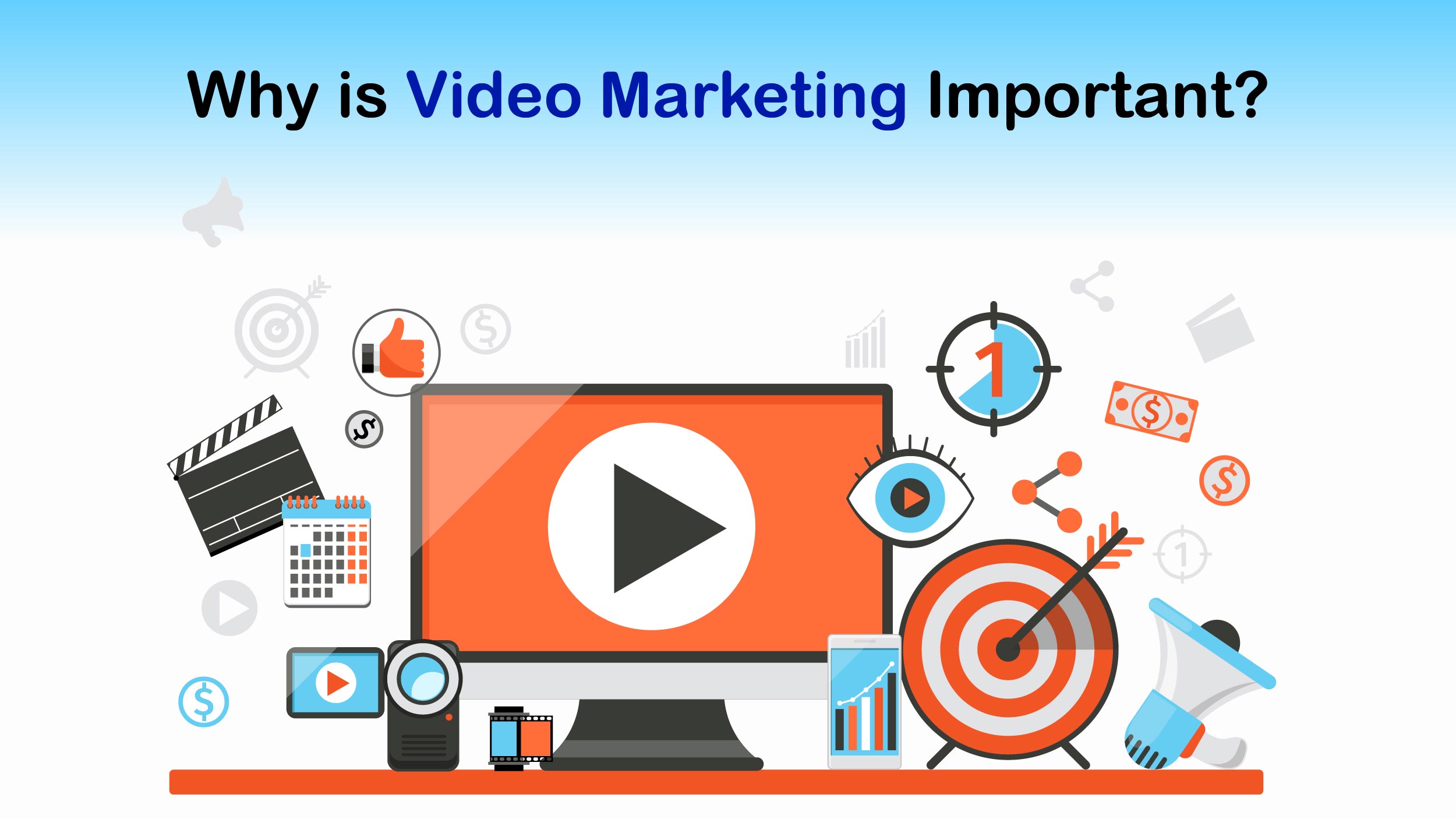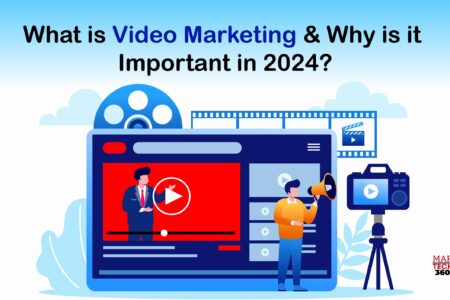Video marketing is a crucial strategy nowadays, mainly because nobody has the time or the patience to go through an entire article or a blog. Every day, 100 million people use the Internet to watch videos.
This is because people want quick results and videos help with just that. This article answers your question on what is video marketing, how it works, and more.
What is Video Marketing?
Video marketing refers to the production and distribution of videos to advertise or market a service or product. The growth of social media platforms and the expansion of high-quality video equipment have both contributed to its rising popularity in recent years. Improving brand exposure, creating consumer interaction, boosting website traffic, and increasing sales are just a few of the many uses for video marketing.
Compared to conventional marketing strategies, it is an efficient technique to grab clients’ attention and convey a message more engagingly and memorably. Businesses can profit greatly from videos, which boost customer engagement, brand awareness, and conversion rates.
Why is Video Marketing Important?

A major reason why videos matter is that audiences love video content. Two-thirds prefer watching videos over reading about products and services.
Benefits of Video Marketing
Video is the second-most popular form of component for boosting interaction on social media. The video has always been a focus on websites like YouTube and TikTok. Video is the main focus on social media sites like Facebook and Instagram.
The importance of video marketing is emphasized by platforms even without native video uploading. Tweets on Twitter receive 10 times more interaction. The adoption of LinkedIn video is anticipated by 68% of marketers who use video. Nearly one billion people use Pinterest every day to view videos.
300% more traffic and leads can be produced via videos. You must therefore optimize your video for SEO to get leads.
Improved Conversion Rates:
There is no likelihood that a video won’t function properly. According to studies, adding a video to your landing page will increase conversion rates by 80%.
Visuals leave a lasting impression on the brain, whether they are used to describe a challenging manufacturing process or a straightforward characteristic. Ensure that you go above and beyond in your explainer video to inform your audience and entice them to buy your product.
This tactic will also catch the interest of your current users. Consequently, videos frequently result in direct sales as well.
Accessibility:
In 2023, convenience and comfort will be the main priorities. Similar to consumers, marketers are all attempting to promote content that is useful and easy to share across all platforms.
Nowadays, everyone works on their phones, and they like to share the stuff that interests them.
Videos are a great way to reach your potential audience cost-effectively and function well on practically every platform. There is zero risk that a video won’t function properly. According to predictions, adding a video to your landing page will increase conversion rates by 80%.
High Engagement:
Email subject lines with just the word “video” can boost opens by 19%. Videos in posts on Facebook are what generate the most natural engagement. A video is the best proof there is for the current consumer, who wants to see what the product is made of.
Statista reports that 96% of Facebook users access the site using a mobile device. While watching something on their phones, people also frequently share, like, or comment.
Several levels of engagement can benefit from video marketing. A potential audience would undoubtedly interact with content that is relatable, educational, or simply entertaining.
Build Trusts:
91.9% of users are happy to view any kind of video, while just 31.3% and 29.8% specifically request instructional videos. For service teams, there are countless choices as well. Customer stories, support video calls, meet-the-team films, onboarding movies, and knowledge-based videos are just a few examples of how video may improve customer support. Users are also learning from other sources besides brands. Although Gen Z and Millennial users have diverse preferences, most of them desire to share knowledge.
Also Read: 7 Video Marketing Tools You Should Know About in 2024
How to Create a Video Marketing Campaign?
Know your Objective
Before you dive into video production, think about the purpose of your video. Setting your campaign goals upfront will help determine your video content—should it be promotional, educational, persuasive, or exciting? Make sure you understand what your video needs to accomplish.
Define Your Audience and Message
It is important to understand your audience to send the right message and achieve your desired campaign goals. Know what you want your video marketing campaign to say. Look to your audience—their interests, their needs—to guide how you say it. For example, to promote brand awareness, create eye-catching explainer videos that not only introduce your brand but also make it memorable to viewers.
Use High-Quality Visuals and Audio
Your video production doesn’t necessarily require a huge amount of resources. It’s more important that the quality of your video file be good, with clean, clear images and sound. Your viewers may be using devices as large as a TV or as small as a mobile phone, so make sure your visuals are easy to see.
Make Audio an Option
Sound boosts the video’s intrigue, yet assuming all viewers watch audibly is unwise. Some viewers use mute on their mobile devices in crowded areas. Provide text captions and clear visuals, ensuring understanding without sound.
Provide Hooking Content
Controlling attention duration is unrealistic. Be concise with your video content as it will define if your audience will stick around or not
Provide a Clear CTA
A successful video marketing campaign should give viewers a clear call to action, like directing them to a product page or providing a link to further appropriate video content.
Final Takeaway
Video marketing is super useful these days. It captures people’s attention and makes them remember brands. With videos, companies can share their story uniquely. Audiences connect better with visual content versus just text. Videos make brands stand out online, where there’s lots of competition.
How to Do Effective Video Marketing for Business?
Businesses employ several video marketing strategies to meet their marketing objectives. Here are a few instances:
- Videos called “explainers” are used by businesses to introduce their goods or services and describe how they help clients with their problems. For instance, Dropbox produced an explanation film that describes the features and advantages of their service.
- Videos that provide instructions on how to use a specific good or service are known as tutorials. Businesses can decrease customer assistance requests and increase customer satisfaction by using these films. Adobe, for instance, provides how-to films for its software products.
- Videos that illustrate a product’s features and advantages are known as product demonstration videos. To present their newest products, tech businesses, for instance, frequently make product launch videos.
- Videos with testimonials and case studies: These kinds of videos offer social proof of a product’s efficacy and can bolster consumer confidence in the company. For instance, Slack has client endorsements on its website.
- Videos from behind the scenes: These videos offer customers a window into a company’s operations and can foster a sense of brand loyalty. For instance, clothing manufacturers frequently publish videos that show how their products are designed and made.
End Note
Video marketing is super useful these days. It captures people’s attention and makes them remember brands. With videos, companies can share their story uniquely. Audiences connect better with visual content versus just text. Videos make brands stand out online, where there’s lots of competition. As more people watch videos, companies need video marketing to succeed.

